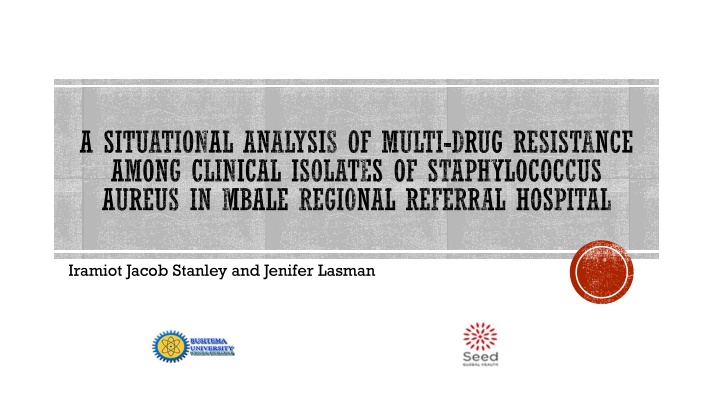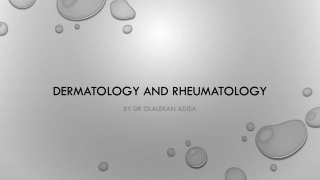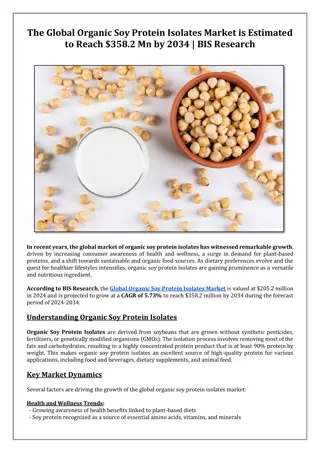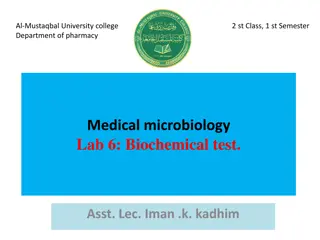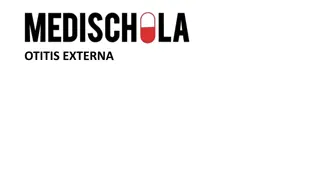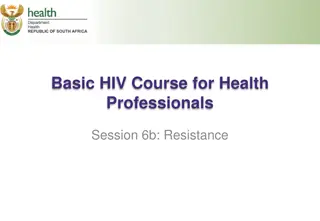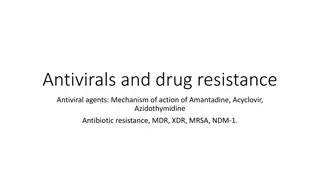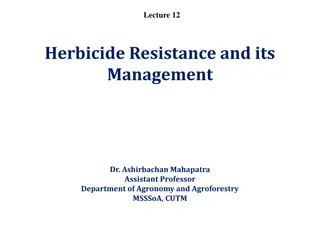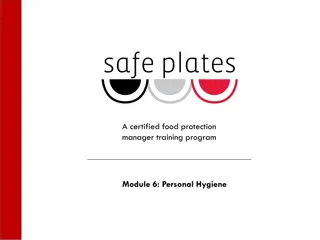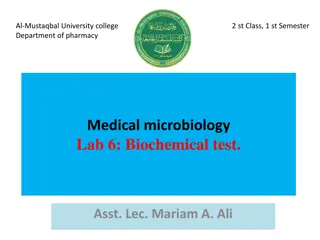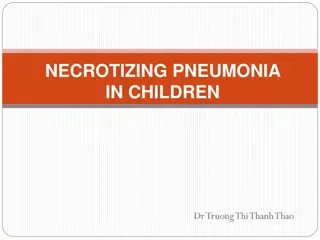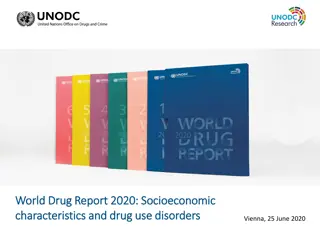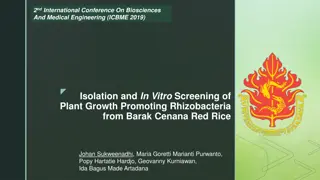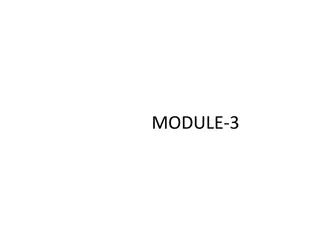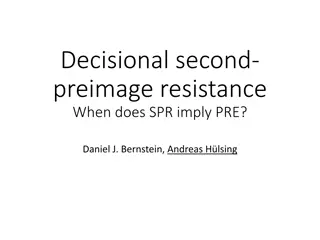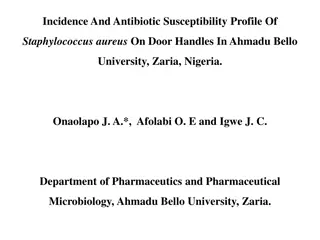Situational Analysis of Multi-Drug Resistance in Staphylococcus aureus Isolates
Antibiotic resistance is a growing concern globally, with Uganda facing significant challenges. A study in Mbale Regional Referral Hospital examined resistance patterns of Staphylococcus aureus, shedding light on the prevalence of multi-drug resistance. Methods included phenotypic screening for methicillin resistance and identification of resistant isolates. The results highlighted high resistance rates, emphasizing the need for effective management strategies.
Download Presentation

Please find below an Image/Link to download the presentation.
The content on the website is provided AS IS for your information and personal use only. It may not be sold, licensed, or shared on other websites without obtaining consent from the author.If you encounter any issues during the download, it is possible that the publisher has removed the file from their server.
You are allowed to download the files provided on this website for personal or commercial use, subject to the condition that they are used lawfully. All files are the property of their respective owners.
The content on the website is provided AS IS for your information and personal use only. It may not be sold, licensed, or shared on other websites without obtaining consent from the author.
E N D
Presentation Transcript
A SITUATIONAL ANALYSIS OF MULTI-DRUG RESISTANCE AMONG CLINICAL ISOLATES OF STAPHYLOCOCCUS AUREUS IN MBALE REGIONAL REFERRAL HOSPITAL Iramiot Jacob Stanley and Jenifer Lasman
BACKGROUND Antibiotic resistance has become a significant problem worldwide and is recognized as a threat to the country of Uganda (UNAS, CDDEP, GARP-Uganda, Mpairwe, Y., & Wamala, S., 2015). S. aureus is a significant cause of morbidity and mortality and has been identified as a sentinel organism in the understanding of antibiotic resistance (Diekema et al., 2001). Uganda, like other developing countries is at risk of returning to the pre-antibiotic error where diseases due to bacteria killed without cure. There presently is limited information on the extent of the resistance problem in Eastern Uganda. This study examined resistance patterns of Staphylococcus aureus in Mbale Regional Referral Hospital in Eastern Uganda.
MATERIALS AND METHODS Study design A cross sectional study. In the laboratory, specimens were cultured on MacConkey, chocolate agar, and then blood agar. These were then incubated at 370C for 18 hours. All the isolates were identified as S. aureus by cultural characteristics and biochemical tests.
ISOLATION AND CONFIRMATION OF MRSA BY PHENOTYPIC METHODS. Phenotypic screening for methicillin resistance was performed using cefoxitin disc (30 g) on Mueller-Hinton agar (Oxoid). Zone diameter of 10 mm was considered resistant for Cefoxitin. Inducible clindamycin resistance (D- Zone test). ICR, was determined using disk approximation test with erythromycin and clindamycin (D-zone test) as recommended by CLSI (CLSI, 2014).
TABLE 1; ANTIBIOTIC RESISTANCE IN MRSA, D TEST +VE AND MDR ISOLATES Antibiotics Resistance (%) MRSA (%) D test +ve (%) MDR (%) Penicillin G Ampicillin Gentamicin Ceftriaxone Nitrofurantoin 79 (57.66) 102 (74.45) 55 (40.15) 38 (48.10) 43 (42.16) 38 (69.01) 38 (52.78) 7 (77.78) 14 (17.72) 20 (19.61) 9 (16.36) 15 (20.83) 1 (11.11) 73 (92.41) 94 (92.16) 55 (100) 70 (97.22) 7 (77.78) 72 (52.55) 9 (6.57) Clindamycin Erythromycin Linezolid Imipenem Vancomycin Cefoxitin Trimetoprim- sulfametoxazole 16 (11.68) 89 (64.96) 4 (2.92) 7 (5.11) 4 (2.92) 48 (35.04) 111 (81.02) 10 (62.50) 42 (47.19) 3 (75.00) 7 (100) 2 (50.00) 48 (35.04) 42 (37.84) 0 (0.00) 19 (21.35) 0 (0.00) 2 (28.57) 0 (0.00) 8 (16.67) 17 (15.32) 15 (93.75) 80 (89.89) 4 (100) 7 (100) 4 (100) 48 (100) 90 (81.08)
DISCUSSION Microbiology laboratories are important in correctly recognizing and reporting S. aureus isolates, which are MRSA and ICR Simple disk diffusion methods used to detect MRSA and ICR can improve clinical management of diseases caused by S. aureus. We show the prevalence of MRSA of 35% and ICR of 14% among S. aureus isolated. Comparable to 37.5% (Ojulong et al., 2009, Seni et al., 2013) in Kampala and elsewhere in the world (Pramodhini et al., 2011, and Ibarra et al., 2008).
DISCUSSION CONT Clindamycin is also used as an alternative for patients who are allergic to penicillin (Drinkovic et al., 2001, Fiebelkorn 2003). The rising prevalence of ICR is of great risk to treatment failure for diseases caused by S. aureus. Use of D test in a routine laboratory enables us to guide the clinicians in judicious use of clindamycin. The highest prevalence of resistance in this study was reported for trimethoprim/sulfamethoxazole. Similar studies (Ojulong et al., 2009) have reported such results in Central Uganda and elsewhere in the world (Kumar et al., 2012). Linezolid, Imipenem and Vancomycin had resistance patterns below five percent, this indicates that these drugs can still be effectively used in our setting.
Clinical significance of Inducible Clindamycin resistance Macrolide-lincosamide-streptogramin B (MLSB) resistance, which is mediated by target side modification mechanism, results in resistance to Erythromycin, Clindamycin, and streptogramin B. This mechanism can be; 1. Constitutive, where the rRNA methylase is always produced. 2. Inducible, where methylase is produced only in the presence of an inducing agent (Note: Erythromycin is an effective inducer of MLSB resistance). Isolates with inducible resistance are resistant to Erythromycin but appear susceptible to Clindamycin in routine invitro testing.
Clinical significance of the D Test Clindamycin is an attractive agent for empirical therapy for suspected S. aureus Clinical failures for MRSA infections have been documented for strains that were clindamycin sensitive but erythromycin resistant. In such cases, In vivo, therapy with Clindamycin may select for constitutive erm mutants, which may lead to clinical failure. Clindamycin resistance may be constitutive or inducible. Routine antibiotic susceptibility tests cannot identify these strains. The D-test is employed to detect inducible clindamycin resistance
CONCLUSION The prevalence of MRSA in Mbale Regional Referral Hospital Eastern Uganda is high. A high proportion of staphylococcal isolates is multidrug resistant. The isolates were highly susceptible to Imipenem, Linezolid and vancomycin but resistant to trimethoprem/sulfamethoxazole. Inducible clindamycin resistance among the isolates was also high Simple phenotypic methods for detection of MRSA and ICR are important for judicious use of antibiotics for treatment of Staphylococcal infections
